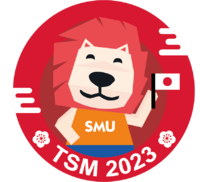2324T1 Tokyo/Reflection
| HOME | | COURSE | | ITINERARY | | ROLE | | TEAM | | ORGANIZATION | | REFLECTION |
- Key takeaways or learning points from the course and project
- Quotes from presenter/senior management/owner/founder
- Keep to one sentence for the course and one sentence for the project
All acts of academic dishonesty (including, but not limited to, plagiarism, cheating, fabrication, facilitation of acts of academic dishonesty by others, unauthorized possession of exam questions, or tampering with the academic work of other students) are serious offences. All work (whether oral or written) submitted for purposes of assessment must be the student’s own work. Penalties for violation of the policy range from zero marks for the component assessment to expulsion, depending on the nature of the offense. When in doubt, students should consult the instructors of the course.
Student Name
Course
Amanda LIM Si Hui
This was a highly enjoyable class that I learned a lot from. We were given the opportunity to visit major companies like SMBC, JPX and the Kajima corporation, that belonged on the Nikkei 225. From this, we learned how major companies were able to incorporate new technology into their operations to cope with ever-changing demands. For example when we visited SMBC, the SMBC representative explained how SMBC was constantly innovating, seeking new ways to use technology to increase its revenue and productivity. There was a SMBC initiative where they provided e-signature services to their clients, as well as facial recognition services. As SMBC also elaborated on the way that they were able to use ideas generated in their Innovation Centre in San Francisco and implement it across its regional groups, I was able to appreciate the degree of influence these large corporations possess. On the other hand, we also managed to capture a glimpse of how Japanese SMEs also make use of technology to continually innovate. For example, we visited ChatPlus, which had to adapt to the up and coming trend of generative AI by leveraging ChatGPT's API for their software to be able to generate questions and answers for clients with minimal client input. They also shared that as an SME, they had to think about how to differentiate themselves from competitors such as Zendesk. To succeed, they disclosed that they used a low price strategy, and are planning to expand abroad. It was inspiring to hear about a relatively small company with 30 employees have such big ambitions. Additionally, I was given the chance to gain a deeper understanding of Japanese culture and its associated customs. We visited the Meiji-Jingu Shrine, and I felt that visits to these kind of cultural sites allowed us to observe how native Tokyo residents behave and interact with each other. I believe that this is valuable knowledge because we we might have a Japanese colleague or business partner/client in the future. In such a scenario, it would be important to show them hospitality, and to take care not to offend them. These kinds of visits also allow us to undertand why Japanese working culture is the way it is. Thus, I felt that culture-based destinations were equally important as the corporate visits and that we struck a good balance between both types of visits during this trip.
NAME
XXXX
